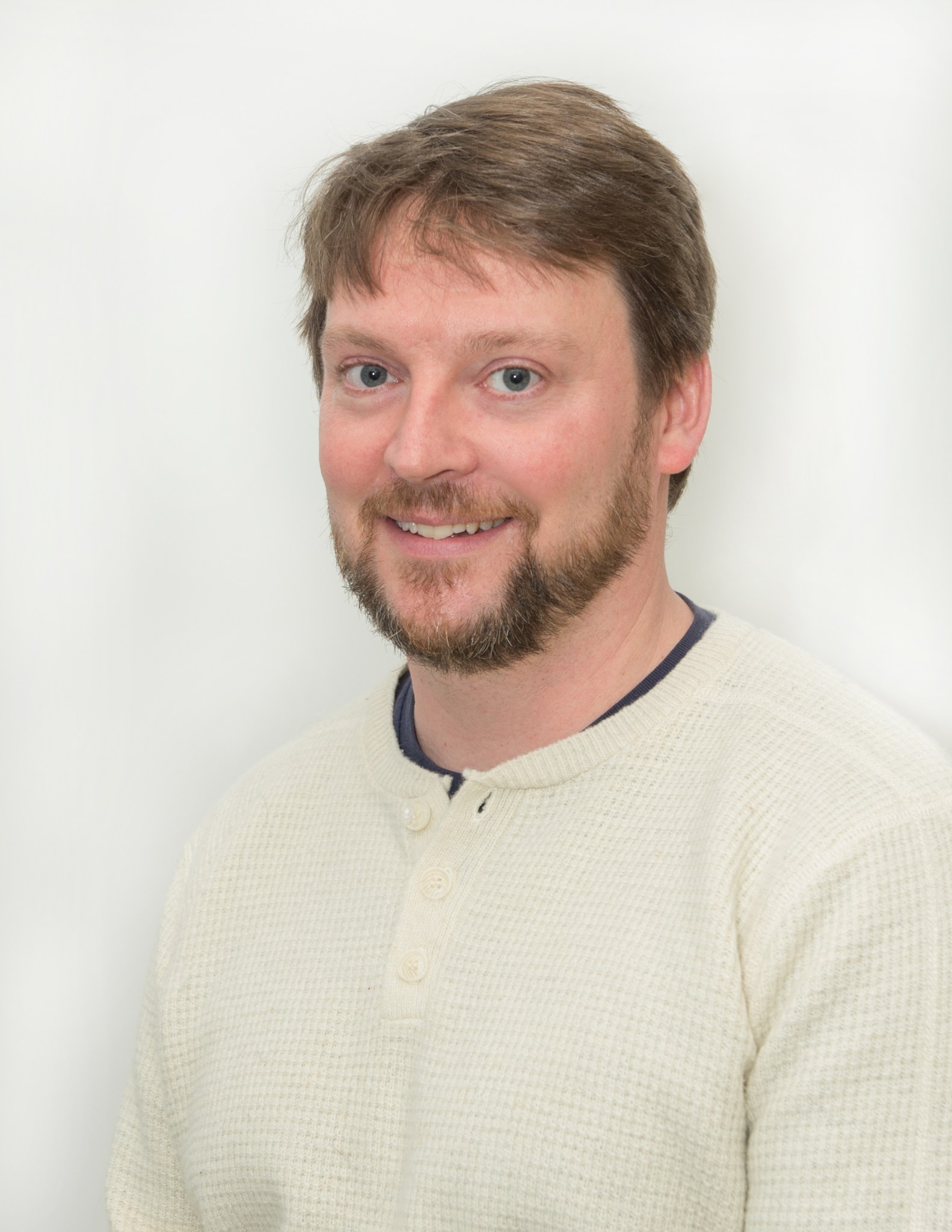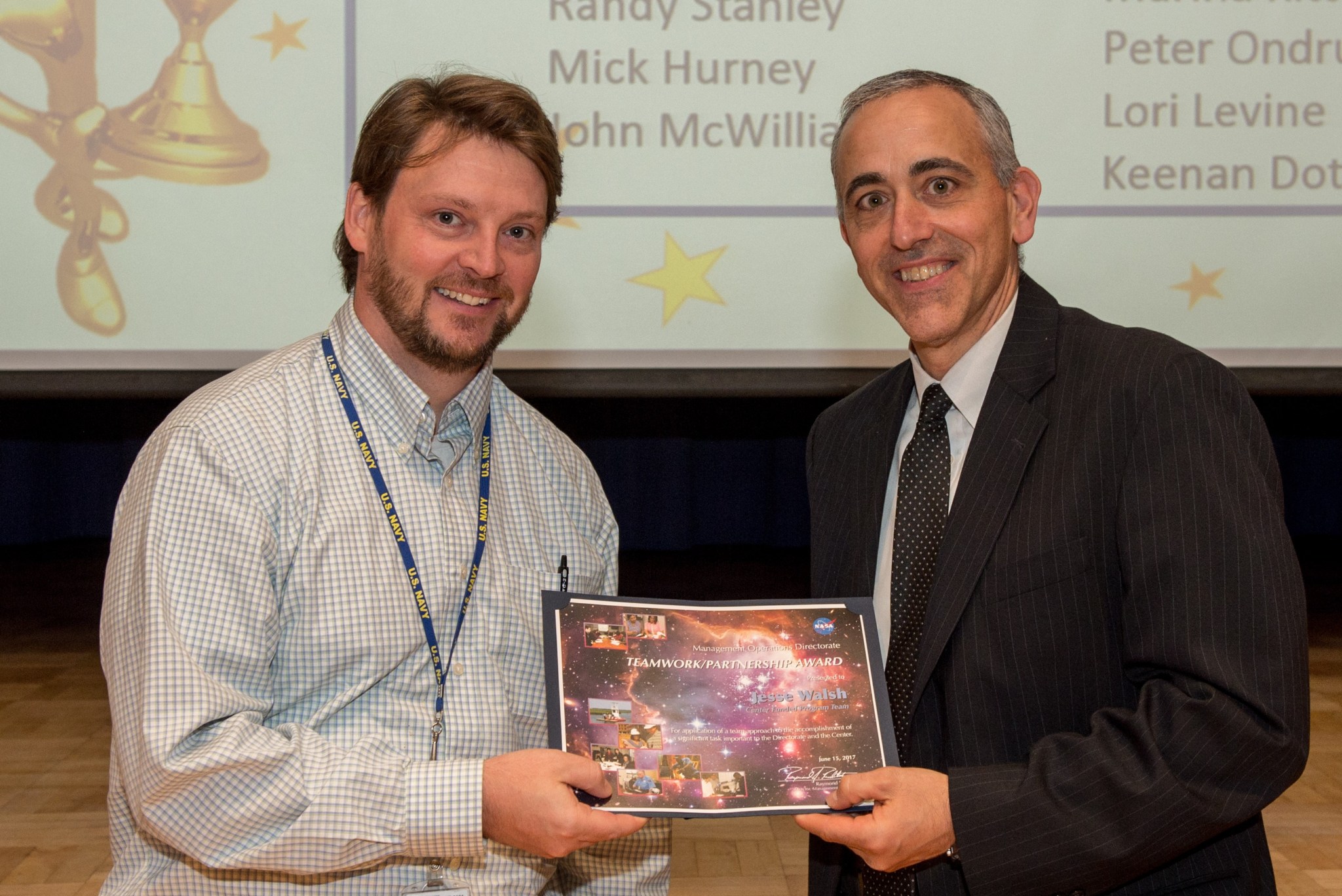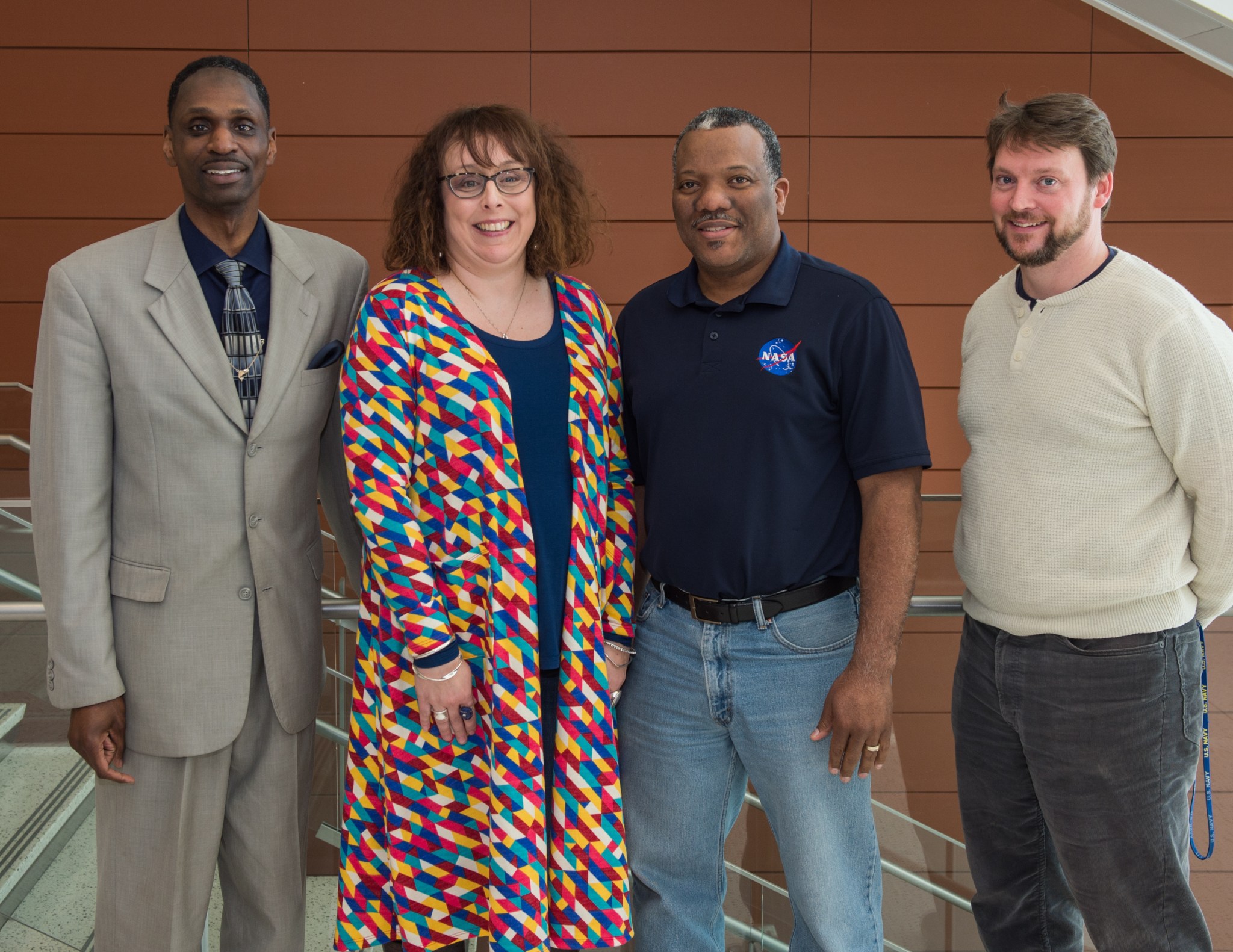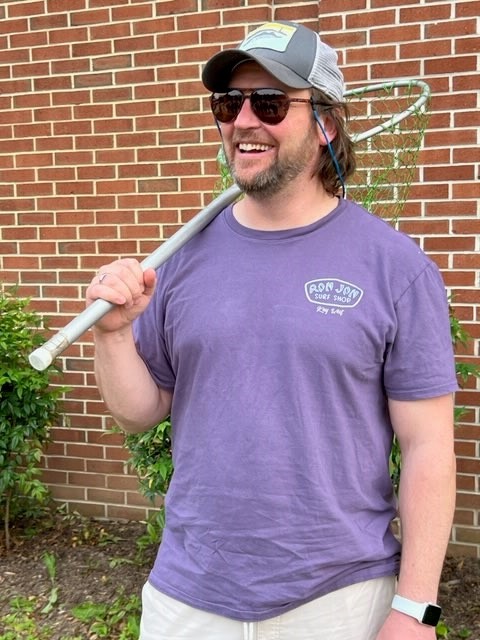
Name: Jesse Walsh
Formal Job Classification: Project Formulation Manager
Organization: Project Formulation and Development Office, Flight Projects Directorate (Code 401.0)
What do you do and what is most interesting about your role here at Goddard? How do you help support Goddard’s mission?
As a formulation manager, I am the project manager in the room as we are designing science space flight missions. We develop proposals to be competed on the agency level against other NASA centers, and outside institutions.
I am also our office’s representative on the Earth science line of business.
What is your background?
In 2000, I graduated from the U.S. Naval Academy with a B.S. in mechanical engineering. In the Navy I went to flight school in Pensacola, Florida, and became a naval flight officer. I was the “Goose,” not “Maverick,” in the P-3 Orion, a four-engine prop plane that primarily hunts for submarines. I was then stationed in Hawaii as part of Patrol Squadron 9, that deployed to the Far East and Middle East. Next, I worked at the Naval Research Lab in Washington, D.C., as a project officer for science experiments on P-3s from Patuxent River Naval Air Station in Patuxent River, Maryland.
I developed migraines that disqualified me from flying. In 2007, I got a master’s in civil engineering project management from the University of Maryland. I then worked in Bethesda, Maryland, constructing buildings around the beltway, as a physics teacher at our local high school, and as a project manager of secure facilities with the Army Corps of Engineers.
In 2016, I became the assistant branch head for facilities planning at Goddard. I later entered the Flight Projects Development Program, a two-year project manager training program, during which time I worked at the Flight Projects Development Office and as the payload manager for Space Infrastructure Dexterous Robot (SPIDER), a payload on OSAM-1. I had a proposal selected for a second step, and I came back to PFDO to work proposals.
Why is this your dream job?
We are on the cutting edge of what will fly. We are designing the missions and figuring out what the world of possible will be in space in five to seven years. Scientists come to the table with ideas and engineers make those ideas reality. I make sure the whole team is working together and that all these ideas and solutions fit within our budget and schedule. We make ideas realities.
How do you translate between scientists and engineers?
It is primarily about understanding incentives. Everyone is thinking differently with different solutions, but we have the same goal. Some scientists have had an idea for years, but the idea still has to be workable. If the resulting instrument or spacecraft fails, technical issues are often the first to be examined. I help the engineers push what they are comfortable making and help the scientists understand the limits of technology.
Please talk about the competing pressures of your job.
We are responsible for taxpayer’s money. If one thing goes wrong, even on a smaller mission, the monetary loss can run into many millions. The missions we build have cost limits. We fit cutting edge science into a cost-limited opportunity.
NASA is extremely thorough. We safeguard taxpayer funds, but also push cutting-edge science.
We are on a seesaw. The engineers are more focused on technical solutions while the scientists are more focused on scientific results. I help everyone negotiate a balance that fits within the cost and schedule. The diversity between and among scientists, engineers, and financial experts is what creates NASA’s innovative solutions.
What are some of your negotiating techniques?
I try to build trust between team members by understanding everyone’s incentives and making sure all team members understand the different incentives. We may have different angles of approach, but we all have the same goal. People are more likely to compromise the means if they know we will end up at the same place.
What is your proudest accomplishment?
I am proudest of our Dorado proposal because it was cutting edge science. We were trying to discover where heavy metals like gold are created in the universe. We were trying to prove that we could do fundamental science on a very lean budget, $35 million.
We did not win the final proposal, but I was extremely proud of our team, a very small, high-functioning team, that made us feel like we could discover the world.
You recently transferred to support the Geospace Dynamics Constellation (GDC) mission. What do you most enjoy about your new role?
I am still learning what I don’t know about GDC. I am finding is fascinating to see how the plans that are made in early stages of formulation change and adapt as they run into unforeseen obstacles during implementation. I am really enjoying being part of a small, high performing team, that is mission focused.
Who is your favorite author?
I married a librarian, and books and stories are fundamental parts of our life. I love Hemingway because he portrays extremely complex, emotional scenarios in very simplistic terms.
Who is your science hero?
My high school physics teacher, Mr. Finkbeiner, who taught me that you understand science in your gut, not your head. Science is not memorizing equations; it is understanding how the world around you works.
What are your hobbies?
I love flyfishing on the Chesapeake’s tidal rivers and also on fresh water for trout. Flyfishing involves actively engaging with nature; reading the water and the tides, figuring out nature’s puzzle and trying to crack the code.
What is your “six-word memoir”? A six-word memoir describes something in just six words.
I can’t wait for what’s next!
By Elizabeth M. Jarrell
NASA’s Goddard Space Flight Center, Greenbelt, Md.
Conversations With Goddard is a collection of Q&A profiles highlighting the breadth and depth of NASA’s Goddard Space Flight Center’s talented and diverse workforce. The Conversations have been published twice a month on average since May 2011. Read past editions on Goddard’s “Our People” webpage.
































